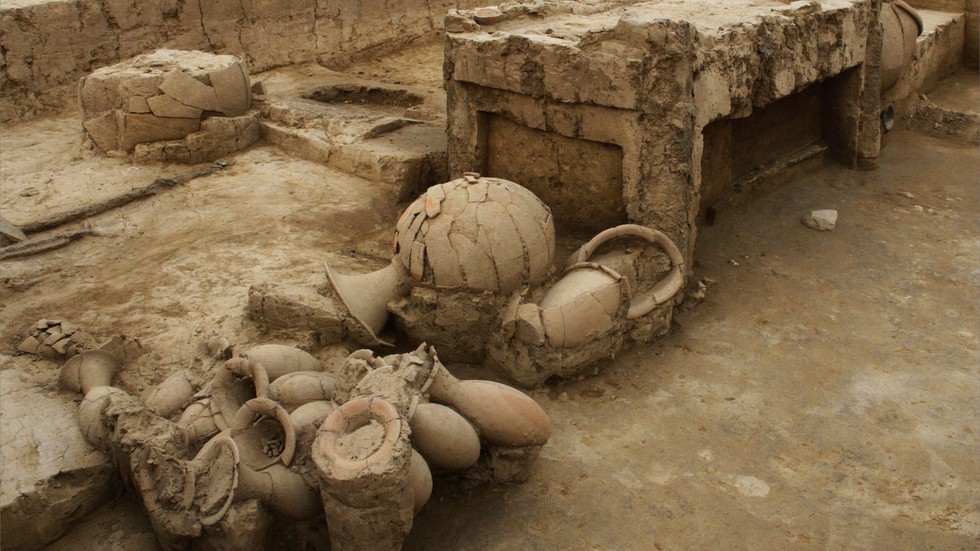
About Rakhigarhi:
- Location: It is an archaeological site located in Hisar district, Haryana, just 27 km from the Ghaggar river, in the Ghaggar-Hakra river plain.
- It is one of the oldest and largest cities of the subcontinent’s earliest known Bronze Age urban culture—the Indus Valley or Harappan Civilization, going back to about 6500 BCE.
- It is one of the five known biggest townships of Harappan civilization on the Indian sub-continent. The other four are Harappa, Mohenjodaro, and Ganveriwala in Pakistan, and Dholavira (Gujrat) in India.
- Findings:
- The exploration around this site has clearly identified seven archaeological mounds.
- Rakhigarhi primarily yields evidence of occupation during the Early and Mature Harappan periods, with the site being completely abandoned during the Late Harappan period.
- The archaeological excavations revealed the mature Harappan phase, represented by a planned township with mud-brick as well as burnt-brick houses with a proper drainage system.
- The ceramic industry represented by red ware, which included dish-on-stand, vase, jar, bowl, beaker, perforated jar, goblet and handis.
- Animal sacrificial pits lined with mud bricks and triangular and circular fire alters on the mud floor have also been excavated, that signifies the ritual system of the Harappans.
- A cylindrical seal with five Harappan characters on one side and a symbol of an alligator on the other is an important find from this site.
- The excavations have yielded a few extended burials, which certainly belong to a very late stage, may be the medieval times.
2. What is the Washington Treaty?
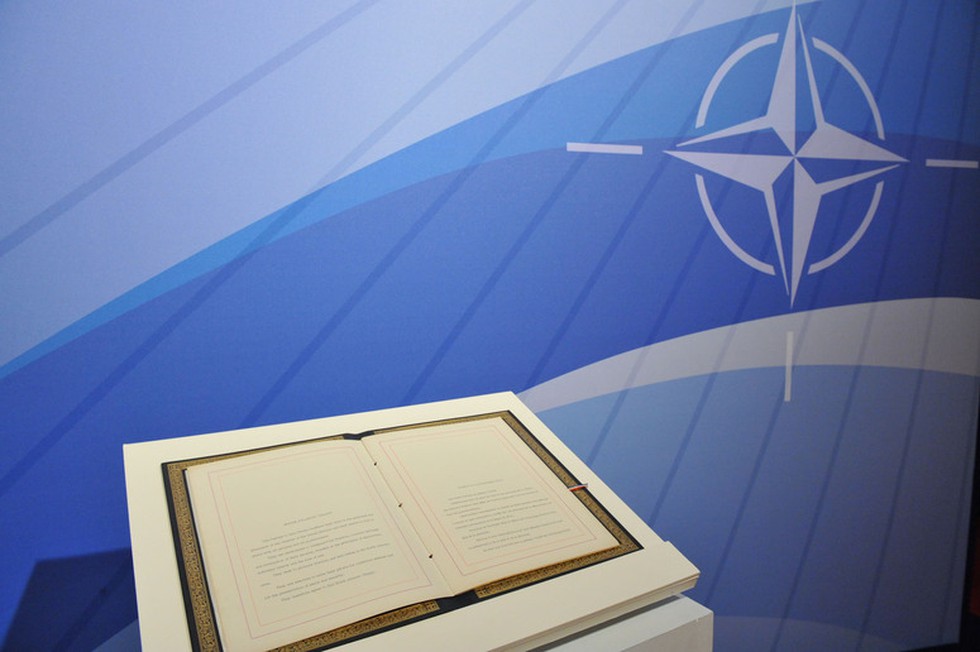
About Washington Treaty:
- The Washington Treaty, or North Atlantic Treaty, forms the basis of the North Atlantic Treaty Organization (NATO). It was signed in Washington D.C. in 1949, by 12 founding members.
- The Treaty derives its authority from Article 51 of the United Nations Charter, which reaffirms the inherent right of independent states to individual or collective defence.
- Collective defence is at the heart of the treaty and is enshrined in Article 5. It commits members to protect each other and sets a spirit of solidarity within the Alliance.
- The treaty is short, containing only 14 articles and provides for in-built flexibility on all fronts. Despite the changing security environment, the original treaty has never had to be modified and each ally has the possibility to implement the text in accordance with its capabilities and circumstances.
Key Facts about NATO:
- It is a military alliance established by the North Atlantic Treaty. It currently has 32 alliance members from North America and Europe.
- Its fundamental goal is to safeguard the Allies’ freedom and security through political and military means.
- It is a system of collective defence where independent member states agree for mutual defence in case of any attack by an external party.
- Article 5of the Washington Treaty states that an attack against one ally is an attack against all.
- Functions:
- Political: NATO promotes democratic values and enables members to consult and cooperate on defence and security-related issues to solve problems, build trust, and, in the long run, prevent conflict.
- Military: NATO is committed to the peaceful resolution of disputes. If diplomatic efforts fail, it has the military power to undertake crisis-management operations.
- In addition to collective defence and key values, the principle of consensus decision-making and the importance of consultation define the spirit of the Organization, together with its defensive nature and flexibility.
- Headquarter: Brussels, Belgium.
3. What is Electroencephalogram (EEG)?
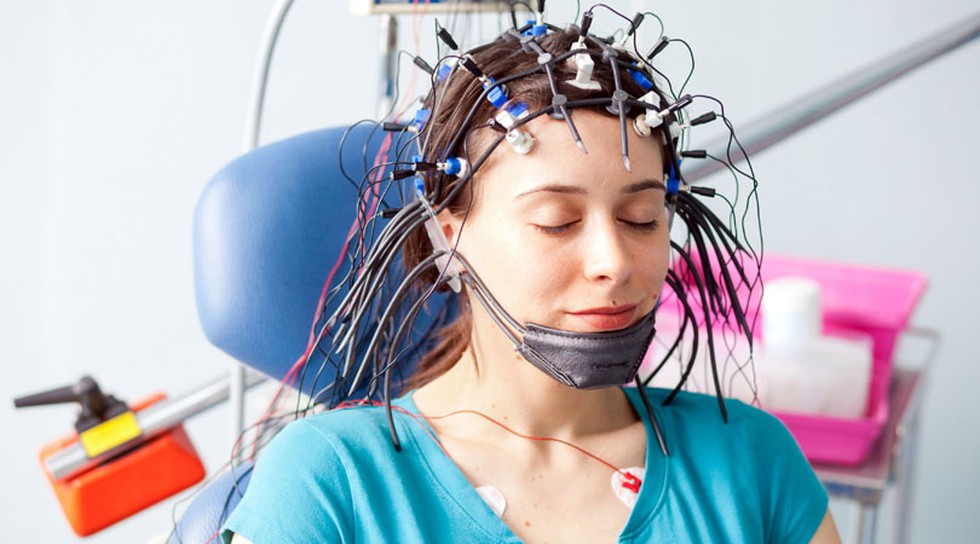
About Electroencephalogram (EEG):
- It is a recording of brain activity. It is a test that detects abnormalities in your brain waves, or in the electrical activity of your brain.
- Procedure:
- During the procedure, electrodes consisting of small metal discs with thin wires are pasted onto your scalp. The electrodes detect tiny electrical charges that result from the activity of your brain cells.
- The charges are amplified and appear as a graph on a computer screen or as a recording that may be printed out on paper.
- Applications:
- The EEG is used to evaluate several types of brain disorders.
- The EEG may also be used to determine the overall electrical activity of the brain (for example, to evaluate trauma, drug intoxication or extent of brain damage in comatose patients).
- The EEG may also be used to monitor blood flow in the brain during surgical procedures.
4. What is the Strategic Forces Command (SFC)?
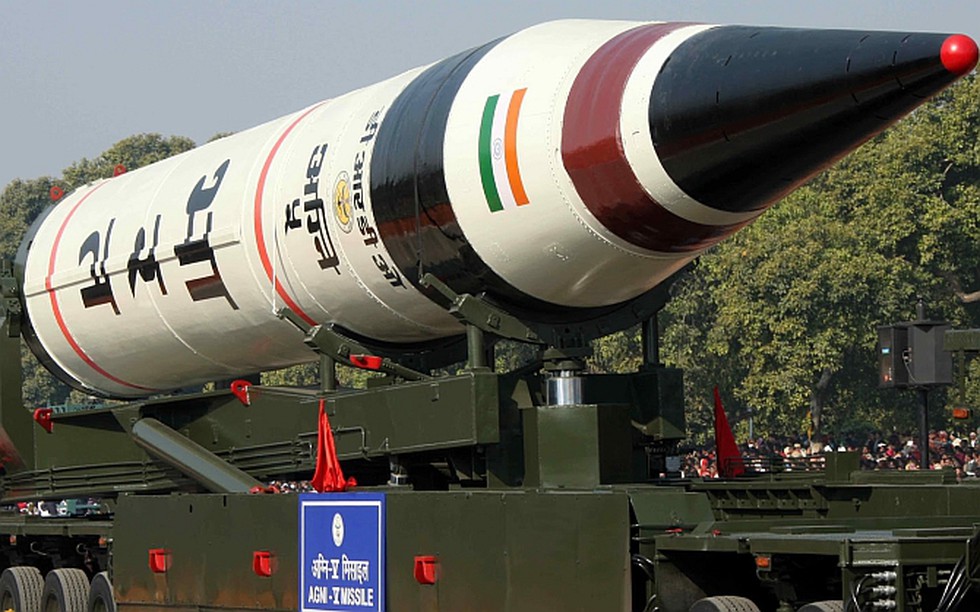
About Strategic Forces Command (SFC):
- The SFC, sometimes called Strategic Nuclear Command, forms part of India's Nuclear Command Authority (NCA), which is responsible for command-and-control decisions regarding India’s nuclear weapons programme.
- It is responsible for the management and administration of the country's tactical and strategic nuclear weapons stockpile. It was created in 2003.
- Responsibility of SFC:
- It is the responsibility of the SFC to operationalize the orders of the NCA under the leadership of a Commander-in-Chief who is a Senior Officer.
- It has the sole responsibility of initiating the process of delivering nuclear weapons and warheads after acquiring clear approval from the NCA.
- Moreover, the final target selection is also done by the SFC through a calibrated, cumulative process involving various levels of decision-making, including formal approval from the NCA.
- It manages and administers all strategic forces by exercising complete command and control over nuclear assets and producing all contingency plans as needed to fulfill the required tasks.
- Since its inception, the SFC’s command, control and communication systems have been firmly established and the command has attained a high state of operational readiness.
- It consists of officers and personnel of the Indian Army, Indian Air Force (IAF), and Indian Navy who are deputed from their respective services.
- The Commander-in-Chief, a 3-star General, is appointed on a rotational basis from the three services.
Key Facts about India’s Nuclear Command Authority (NCA):
- It is the authority responsible for command, control and operational decisions regarding India's nuclear weapons programme.
- It comprises a Political Council and an Executive Council.
- The Political Council is chaired by the Prime Minister.
- It is the sole body which can authorize the use of nuclear weapons.
- The Executive Council is chaired by the National Security Advisor.
- It provides input for decision-making by the NCA and executes the directives given to it by the Political Council.
5. What is World Anti-Doping Agency (WADA)?
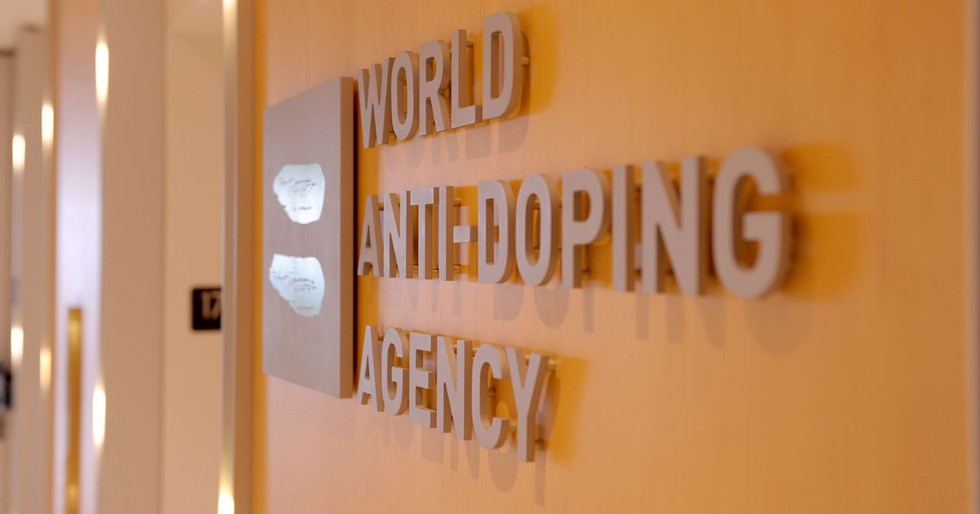
About World Anti-Doping Agency (WADA):
- It was established in 1999 as an international independent agency to lead a collaborative worldwide movement for doping-free sport.
- It’s governance and funding are based on an equal partnership between the sport movement and governments of the world.
- Its primary role is to develop, harmonize and coordinate anti-doping rules and policies across all sports and countries.
- Its key activities include scientific research, education, the development of anti-doping capacities and monitoring of the World Anti-Doping Code (Code), the document harmonizing anti-doping policies in all sports and all countries.
- Formation:
- After the events that shook the world of cycling in the summer of 1998, the International Olympic Committee (IOC) decided to convene a World Conference on Doping.
- The First World Conference on Doping in Sport held, in Lausanne, Switzerland, on February 2-4, 1999, produced the Lausanne Declaration on Doping in Sport.
- It provided for the creation of an independent international anti-doping agency to be operational for the Games of the XXVII Olympiad in Sydney in 2000.
- Pursuant to the terms of the Lausanne Declaration, the WADA was established on November 10, 1999, in Lausanne to promote and coordinate the fight against doping in sport internationally.
- It is a Swiss private law, not-for-profit foundation. Its seat is in Lausanne, Switzerland, and its headquarters are in Montreal, Canada.
- Governance Structure:
- A 42-member Foundation Board (Board), the agency’s highest policy-making body, is jointly composed of representatives of the Olympic Movement (the IOC, National Olympic Committees, International Sports Federations, and athletes) and representatives of governments from all five continents.
- A 16-member Executive Committee (ExCo), to which the Board delegates the management and running of the agency, including the performance of all its activities and the administration of its assets.
6. Kumittipathi Rock Paintings
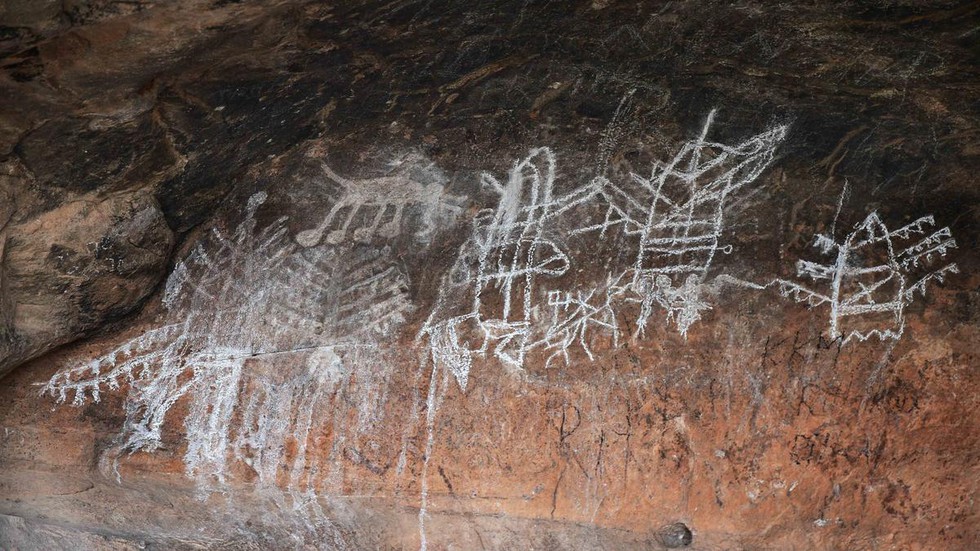
About Kumittipathi Rock Paintings:
- These paintings believed to be around 3,000 years old and are among the important rock arts in the Kongu region.
- Theme: The paintings depict an elephant, ther (chariot, some say it is a peacock) and the lives of early dwellers of the region.
- There are small pits and holes in the cave, which are believed to have been used to store water and other belongings.
- Material used: They used an inorganic white pigment, along with natural gum to paint the figures.
- While most of the rock painting sites in Tamil Nadu are found on rock shelters, those at Kumittipathi are drawn inside a cave.
7. Project Akashteer
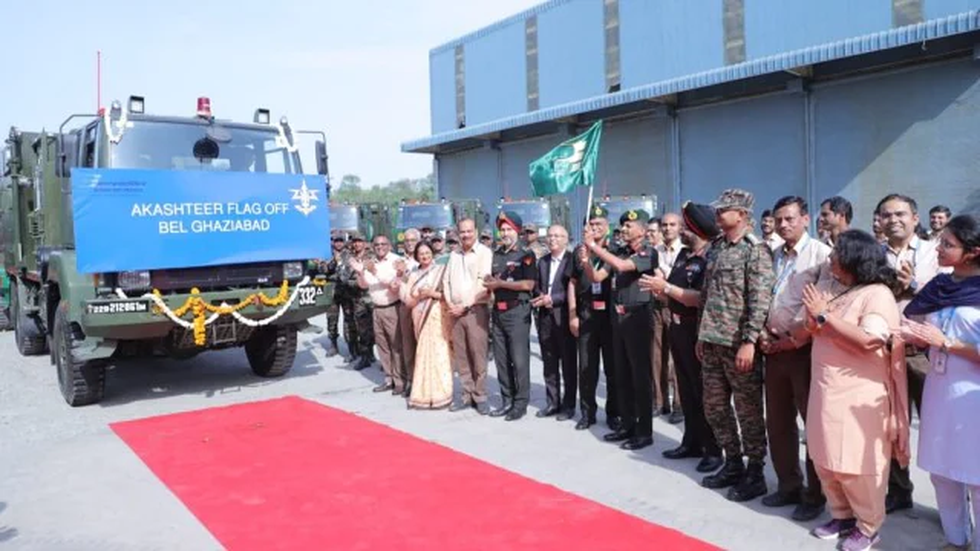
About Project Akashteer:
- It is a cutting-edge initiative designed to automate air defense control and reporting processes by digitizing them.
- It aims to deliver an unprecedented level of situational awareness and control for the force to ensure the safety of friendly aircraft and engage hostile aircraft in contested airspace.
- It will enable monitoring of low level airspace over the battle areas of Indian Army and effectively control the Ground Based Air Defence Weapon Systems.
Key facts about Akashteer Command and Control Systems:
- It is developed by Bharat Electronics Limited (BEL) as part of the 'Atmanirbhar Bharat' initiative. The system's control centers, designed to be vehicle-based and mobile, can maintain operational capabilities even in challenging communication environments.
- It will significantly enhance India's air defense capabilities in several ways:
- Efficiency and Integration: By digitizing Air Defence Control and Reporting processes, 'Akashteer' will usher in unprecedented levels of efficiency and integration. This will enable the Indian Army to respond swiftly to hostile threats while minimizing the risk of friendly fire incidents.
- Situational Awareness: It integrates radar and communication systems into a unified network, providing the Indian Army with unprecedented situational awareness. This will enable them to detect and engage hostile targets more effectively.
- Automation: Overall, the deployment of 'Akashteer' signifies a leap towards complete automation of air defense operations.
8. Southern Ocean
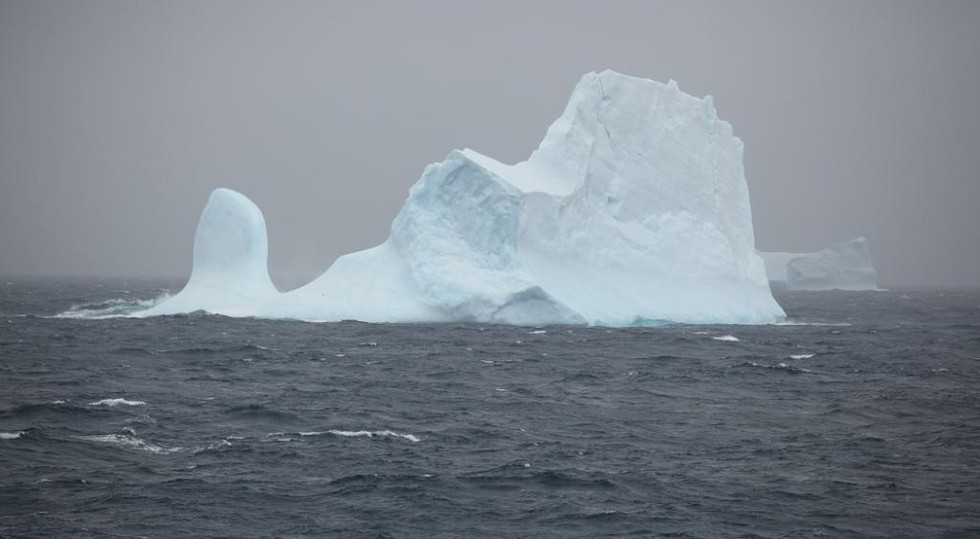
About Southern Ocean:
- It is also known as the Antarctic Ocean which is one of the five great ocean basins on Earth. It was formed when Antarctica and South America drifted apart, creating the Drake Passage.
- It is made up of the portions of the world ocean south of the Pacific, Atlantic and Indian oceans and their tributary seas surrounding Antarctica below 60° S. It is known for its strong winds, intense storms, dramatic seasonal changes and cold temperatures.
- It is dominated by the Antarctic Circumpolar Current (ACC) which is the longest, strongest, deepest-reaching current on earth. The ACC circulates clockwise around the continent, carrying more water around the globe than any other current.
- Biodiversity: The Ocean supports a variety of plants and animals, with most animals relying on the rich phytoplankton from the Antarctic Convergence. Marine life includes whales, penguins, orcas, and seals.
9. RBI Retail Direct scheme

About RBI Retail Direct Scheme:
- It was initially introduced in November 2021. It gives access to individual investors to maintain gilt accounts with the RBI and invest in government securities.
- The scheme enables investors to buy securities in primary auctions as well as buy/sell securities through the NDS-OM platform.
- Negotiated Dealing System - Order Matching system (NDS-OM) means RBI’s screen based anonymous electronic order matching system for trading in Government securities in the secondary market.
- It provides the following facilities to retail investors in government securities market through an online portal:
- Open and maintain a ‘Retail Direct Gilt Account’,
- access to primary issuance of government securities, and
- access to NDS-OM.
- Eligibility: Retail investors can register under the scheme and maintain an RDG account, if they have the following:
- Rupee savings bank account maintained in India,
- PAN, any officially valid document for KYC purpose,
- valid email-ID and registered mobile number.
- Payments for transactions can be done conveniently using saving bank account through internet-banking or Unified Payments Interface (UPI).
- Investor services include provisions for transaction and balance statements, nomination facility, pledge or lien of securities and gift transactions. No fees will be charged for facilities provided under the scheme.
10. Glacial Lake Outburst Floods
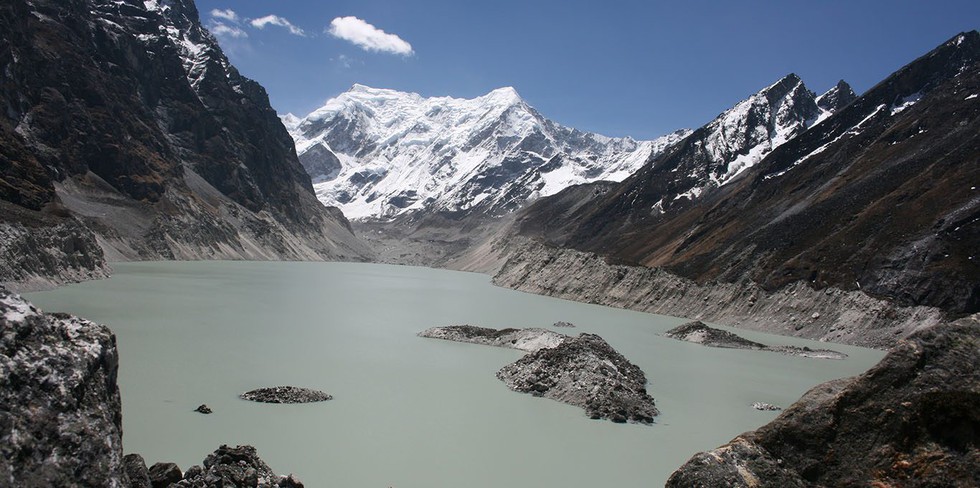
About Glacial Lake Outburst Floods:
- These are disaster events caused by the abrupt discharge of water from glacial lakes.
- What are glacial lakes?
- They are large bodies of water that sit in front of, on top of, or beneath a melting glacier. As a glacier withdraws, it leaves behind a depression that gets filled with meltwater, thereby forming a lake.
- The more the glacier recedes, the bigger and more dangerous the lake becomes. Such lakes are mostly dammed by unstable ice or sediment composed of loose rock and debris.
- In case the boundary around them breaks, huge amounts of water rush down the side of the mountains, which could cause flooding in the downstream areas. This is called as Glacial Lake Outburst Flood.
- Reasons for GLOFs:
- It can be triggered by various reasons, including glacial calving, where sizable ice chunks detach from the glacier into the lake, inducing sudden water displacement.
- Incidents such as avalanches or landslides can also impact the stability of the boundary around a glacial lake.
Situation in Uttarakhand:
- It has 13 glacial lakes which are prone to GLOF. Five highly sensitive glacial lakes fall into the ‘A’ category. These include Vasudhara Tal in the Dhauliganga basin and four lakes in Pithoragarh district — Maban Lake in Lassar Yangti Valley, Pyungru Lake in the Darma basin, an unclassified lake in the Darma basin, and another unclassified lake in Kuthi Yangti Valley.


























































































































































.png)
.png)
.png)
.png)
.png)


.png)
.png)
.png)





.png)
.png)






.png)
.png)
.png)
.png)
.png)
.png)
.png)
.png)
.png)

.png)







.png)
.png)


.png)
.png)
.png)


.png)

.png)
.png)





.jpg)

.png)
.png)


.png)

.png)
.png)
.png)

.jpg)

.jpg)


.png)

.png)
.png)
.png)
.png)
.png)
.png)
.png)
.png)
.png)
.png)




.png)

.png)





.png)
.png)
.png)
.png)
.png)
.png)
.png)
.png)
.png)
.png)
.jpg)
.jpg)

.png)
.png)
.png)
.png)
.png)
.png)
.png)
.png)
.png)
.png)
.png)
.png)
.png)
.png)
.png)
.png)
.png)
.png)
.png)
.png)
.png)
.png)



.png)
.png)

.jpg)
.jpg)


.jpg)
.jpg)
.jpg)
.jpg)
.jpg)

.jpg)








.jpg)
.jpg)
.jpg)
.jpg)
.jpg)

















.jpg)
.jpg)







.jpg)


















.jpg)
.jpg)






























































































.jpg)
.jpg)


























.jpg)

.jpg)










.jpg)








.jpg)




.jpg)










.jpg)


















.jpg)












































.jpg)














.jpg)
.jpg)
.jpg)





.jpg)

.jpg)
.jpg)





































































.jpg)


































.jpg)
.jpg)
















































.jpg)












.jpg)


.jpg)




.jpg)
.jpg)
.jpg)

.jpg)
.jpg)
.jpg)
.jpg)

.jpg)
.jpg)
.jpg)

.jpg)
.jpg)
.jpg)
.jpg)
.jpg)
.jpg)
.jpg)
.jpg)

.jpg)


.jpg)
.jpg)
.jpg)
.jpg)
.jpg)
.jpg)
.jpg)
.jpg)
.jpg)
.jpg)











.jpg)
.jpg)





.jpg)
.jpg)
.jpg)
























.jpg)
























.jpg)









.jpg)
.jpg)







.jpg)
.jpg)









































.jpg)
.jpg)
.jpg)
.jpg)
.jpg)

.jpg)
.jpg)
.jpg)
.jpg)
.jpg)


.jpg)
.jpg)
.jpg)
.jpg)
.jpg)

.jpg)
.jpg)
.jpg)
.jpg)
.jpg)
.jpg)
.jpg)
.jpg)
.jpg)
.jpg)
.png)

.png)
.png)

.png)
.png)
.png)
.png)


.jpg)
.jpg)

.jpg)
.jpg)
.jpg)

.png)
.png)
.png)
.png)
.png)
.png)
.png)

.png)
.png)
.png)
.png)
.png)
.png)
.png)
.png)
.png)
.png)





































































-min.png)



.png)




.png)








































